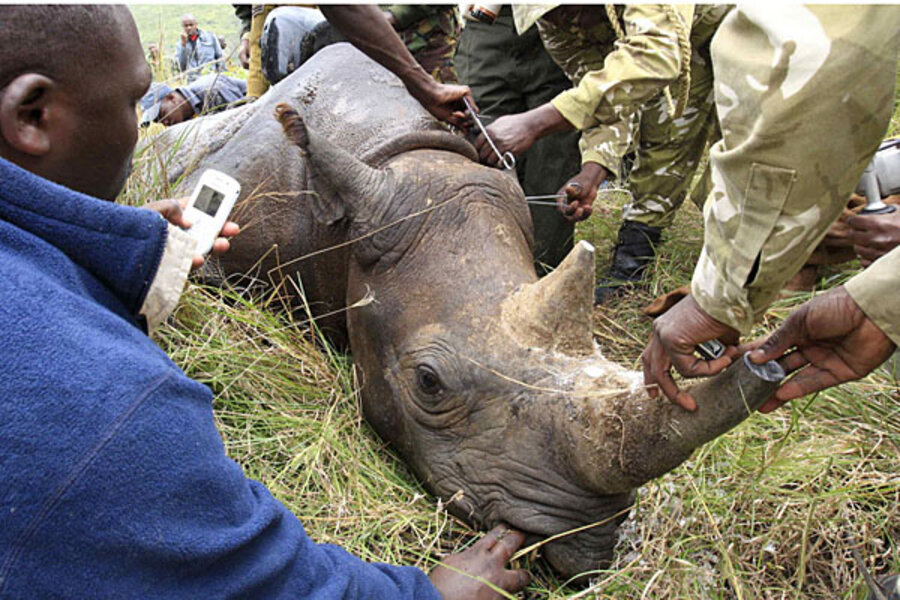Kill one to save the rest? Black rhino hunt auctioned off for conservation efforts.
Amid much controversy, the Dallas Safari Club is planning to save the endangered black rhino species by doing what seems to be the precise opposite: offering to kill one off.
The hunting club in Texas announced earlier this month that it will be auctioning off a permit to kill one rare black rhino in Namibia, in cooperation with the country's government. The move is expected to rake in from $250,000 to $1 million for the Conservation Trust Fund for Namibia's Black Rhino.
The move has sparked a strong backlash from wildlife critics, even landing a short segment on The Colbert Report. But the DSC claims there is a method behind the move.
"First and foremost, this is about saving the black rhino," said Ben Carter, DSC executive director, in a statement. "There is a biological reason for this hunt, and it's based on a fundamental premise of modern wildlife management: populations matter; individuals don't. By removing counterproductive individuals from a herd, rhino populations can actually grow."
There are about 5,000 black rhinos left in the world, with about 1,800 residing in Namibia.
Under international convention, Namibia is allowed to export the hunted carcasses of five black rhinos every year. A press release explains that the government chose the DSC to auction the special permit, and has also selected DSC for another rhino permit auction.
The DSC argues that removing aggressive, territorial older bulls will actually help the species, as they often kill younger males and calves.
"Science shows that eliminating certain individual rhinos will increase herd survival and help populations grow," Mr. Carter said in the statement. "This hunt is a way to accomplish that goal while generating major funding for other crucial elements of rhino conservation."
The US Fish and Wildlife Service must issue an import permit for the carcass of an endangered animal. Although a DSC press release states that the Service has promised "full cooperation with a qualified buyer," the process is still up in the air.
Tim Van Norman, chief of the permit branch at the Fish and Wildlife Service, says the DSC had asked the Service to issue a permit beforehand so that they could guarantee that the winner of the auction would be able to import the trophy. But the service needs to have the name of an actual applicant in order to move foreword.
"We've had communications with the Dallas Safari Club, they brought us the idea of having an auction," he says. "They asked the service to issue an import permit to John Doe – we said we could not issue a permit to John Doe, we needed an applicant to actually submit an application."
No decision has yet been made on issuing a permit, since the Service has not received a formal application, Van Norman says. After the department reviews the application, there is also a 30-day public comment period. The whole application takes at least 60 days, perhaps even longer than 90.
Van Norman says removing certain animals from a population is actually a recognized wildlife management tool used worldwide.
"There are certainly cases where removal of one animal may free up breeding of other animals or somehow provide benefits," he says.
But he says the idea that it's beneficial to remove older males may not always be true.
"It may be that [an aggressive rhino is] not producing many offspring, but they're all good strong offspring and it's worth keeping them," he says.
Wayne Pacelle, president of the Humane Society of the united States, told ABC News that the group plans to petition the Fish and Wildlife Service not to issue an importation permit that would allow the dead rhino into the country.
Van Norman says he has not heard of the petition so far, maybe because it has not reached his desk yet.
The DSC could not immediately return comment at this time.







